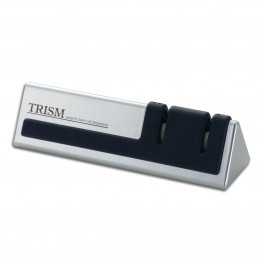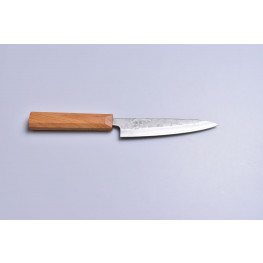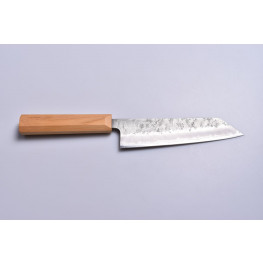Product detail
Hokiyama Cutlery was founded in the legendary Tosa area of Shikoku Island in 1919. At the time of writing, the third generation of Hokiyamas, led by Shinsuke, is celebrating the company's 100th anniversary. On this occasion, it gradually launches exceptional knives called Tosa-Ichi and Sakon. The name Tosa-Ichi can be freely translated as number one from Tosa or the best of Tosa. While the Tosa-Ichi Group incorporates traditional approaches and materials and Mugen the innovative ones, Sakon represents their penetration and offers knives with an emphasis on their practical use.
The latest addition to this group is Sakon Ginga Nashiji Bright. At the manufacturer Hokiyama Cutlery, we are already used to complicated names of its products, but on the other hand we acknowledge its sense of complexity. According to the name, you can identify where the knife is classified, what material it is made of and what its final treatment is. Practical.
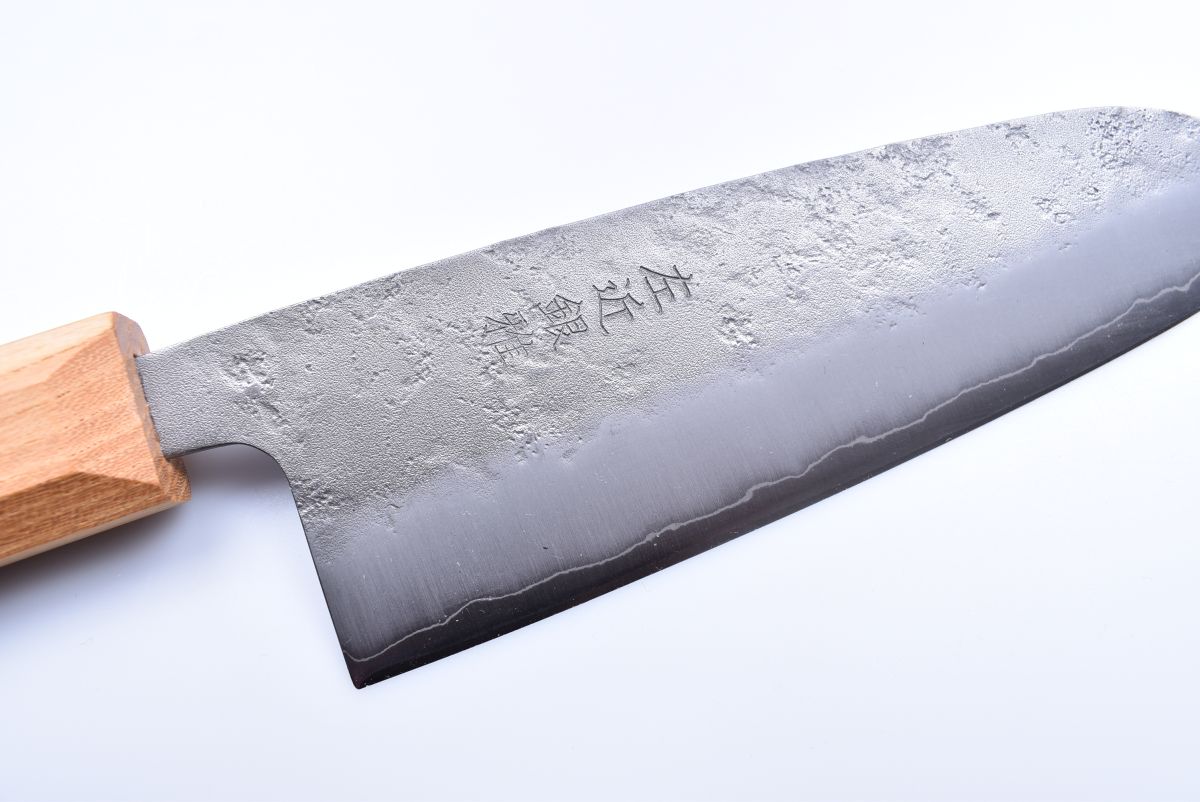
We have already decoded Sakon. Ginga follows. It is the name of the "silver" steel Gingami 3. This steel is very similar in its properties to high-carbon gems from Yasuki Specialty Steel, but unlike them, it is one of the so-called anticorrosive materials. It contains 13 - 14.5% free chromium. It is hard (60 HRC) because the carbon content approaches the values of Shirogami 2 and Aogami 2 / 0.95 - 1.1% /. It feels very good on grinding stones and holds the blade for a long time. The core is lined on the sides with softer steel SUS-405, which facilitates grinding. We come to the word Nashiji. In translation, it means pear, and its flesh is reminded by the gentle beating of the outer layer of the blade. Unlike Tsuchime's dynamic hammer decor, Nashiji looks stoically calm. The last word is Bright. This English term is a reference to the light color of the blade. The sandblasted strip at the bottom resembles a shinogi of Japanese swords. The last action on the blade is decently embossed kanji characters, which means Sakon Ginga. For detailists, we state that gin is silver and ga is elegant.

Simplicity is beauty and here it is 100%. The rustic blade is combined with an octagonal handle without a ferrule. Zelkova wood - Japanese ironwood was used as the material. It is called Keyaki in its homeland and, due to its hardness and durability, has been widely used in the past to build ships, temples and shrines. An example is the breathtaking terrace of Kiyomizu-dera Temple in Kyoto. Like honoki, it is a fairly expensive material and is therefore mainly used today for interior accessories. Its fine grain and attractive color complete the balance of this exceptional knife.
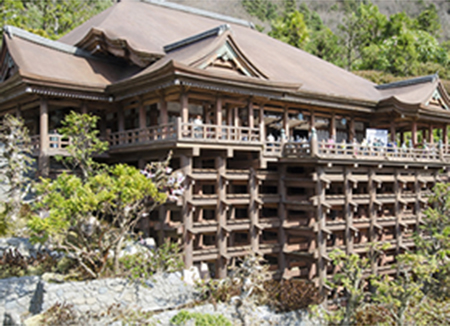
©2010-2019 Copyright Roman Ulík, Nippon Knives,www.japonskenoze.sk , all rights reserved.
Photographs and texts are protected by copyright and their use is not possible without the author's consent.
About producer

Tosa is the ancient name of today's Kochi Prefecture, which is located in the southern part of the island of Shikoku. The north of the prefecture is made up of inhospitable mountains, which towards the south pass into a fertile plain filled with countless rice fields. They are protected from possible tsunami waves by barriers built on the beaches of the Pacific Ocean. Connoisseurs of Japanese blacksmithing will not call this area anything other than Tosa.
For more than 800 years, the interlaced steel made famous by samurai swords has been forged in Tosa. It can be said that this area has become a kind of "open-air museum" of traditional blacksmithing. You will find small workshops scattered here, in which individual family generations create gems that are incomprehensible to us. It is almost a rule that father and son work in the workshop to ensure the continuity of the tradition. All kinds of blades are made here, from agricultural tools to rare knives, but in a diametrically different way than in the Seki, Sakai, or Tsubame/Sanjo areas. Knives intended for decoration were never produced here, but durable work tools. That is why knives from Tosa are sought after by connoisseurs all over the world.
Since 1919, the Hokiyama Cutlery company has been among the pioneers in improving the traditional production of kitchen knives. In accordance with the motto "the good must be preserved and, if possible, also improved", Shinsuke Hokiyama created 3 lines in his company: traditional, practical and innovative.
The traditional line /Tosa-Ichi/ consists of hand-forged blades from such masters as Takeo Murata. It is a layered steel, the core of which is high-carbon shirogami or aogami type steel. Hitachi Blue Super is used for the best pieces. The blades are most often in the unpolished form of kurouchi. Knives require care, as this material is not anti-corrosive. The practical line /Sakon/ is a symbiosis of traditional production procedures with modern materials and design. In addition to high-carbon steel, very hard powder tool steel and damascene steel are also used. Emphasis is placed on precisely processed and ergonomically tuned handles. The innovative line /Mugen/ is the pride of Hokiyama Cutlery. It adopts advances from other fields into the production of its knives. These are mainly self-sharpening knives SAKON+ with the patented Vee-Tech technology taken from the aviation and space industry.
Friendly relations with the owner of Hokiyama Cutlery, Mr. Shinsuke Hokiyama, enabled us to gradually bring you the most interesting knives from the legendary Tosa region.
©2010-2018 Copyright Roman Ulík, Nippon Knives, www.japonskenoze.sk all rights reserved.
Photos and texts are protected by copyright law and their use without the author's consent is not possible.


 Sign in
Sign in Registration
Registration















